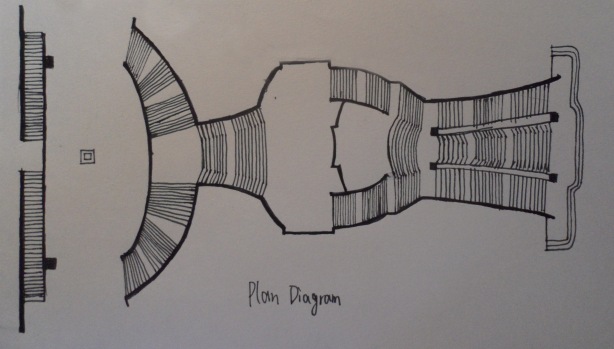Spanish Steps
Architect: Alessandro Specchi
Location: Rome, Italy.
Date: 1721-1725
Building Type: Stairway
Architecture Styles: Baroque
Architectural Time Period: 1700s
Construction Type: Bearing Masonry
Context: Urban
Introduction(Information mainly based on Internet and Readings):
The Spanish Steps are a set of steps in Rome, Italy, climbing a steep slope between the Piazza di Spagna at the base and Piazza Trinità dei Monti, dominated by the Trinità dei Monti church at the top. It is the widest staircase in Europe.
The monumental stairway of 138 steps was built with French diplomat Étienne Gueffier’s bequeathed funds of 20,000 scudi, in 1723–1725, linking the Bourbon Spanish Embassy, and the Trinità dei Monti church that was under the patronage of the Bourbon kings of France, both located above — to the Holy See in Palazzo Monaldeschi located below. The stairway was designed by architects Francesco de Sanctis and Alessandro Specchi.
My own exploration:
Keywords: Urban Design, Approach
Urban Design
In urban design strategy, the Spanish Stairs were built to unite Via del Babuino, which is the easternmost of the three main arteries radiating into the city from the Piazza del Popolo with Via Felice. It is the first great street planned by Sixtus V (1585). Their junction is crossed at an approximately right angle by Via Condotti, which defines the direction toward St. Peter’s and the Vatican. The architect Alessandro Specchi’s ideas were later assimilated by the chosen architect of the Stairs, Francesco de Sanctis. The very rich and varied solution ultimately employed by De Sanctis (1723-26) is based on a simple doubling in depth of the central theme from the Ripetta: a protruding volume flanked by convex stairs and a straight flight in front. The upper unit presents the theme in its basic form; the lower constitutes an articulate and lively variation.
Plan Diagram of Spanish Steps
Approach
On the way up or down, there are three landing area to take a “break” of the long approach within the two levels, which is a brilliant idea. These three landing areas function as resting space for people.
Photograph taken at the bottom of the piazza, we can see people seating on the steps to take a rest
One of the landing area while walking up
Views from the upper-most landing area, looking towards the piazza and the main commercial street
The curve away staircase while walking up, this gesture has successfully connected the upper piazza and welcoming the circulation on a wider range
Approach and sectional diagram of Spanish Steps, which clearly shows the relationship of different levels









